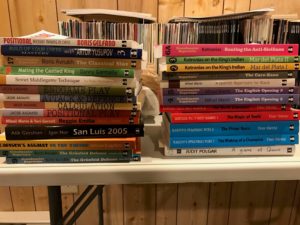One of the most challenging parts of any study plan, regardless of how it is formatted, is how to properly allocate the study time that you do have.
If you’re like me, time for chess is limited. Improving at chess is important to me, but I have a job and I have a wife and I will not continuously neglect either of them for the sake of improvement.
This means that in the typical day I get around one good hour to work and parts of another hour more often than not.
On the weekends I can usually get an extra hour each day over and above the weekday time. So in a good week I’m getting 10 quality hours if I use them all. So how to use them properly?
Well, one thing that you should know about my chess schedule is that it includes a rated club game every Thursday. This means I typically know who my opponent is at least a couple of days in advance. So it would seem that opening prep should be a natural part of what I do.
Well, it is, but lately not in the way that it used to be.
Until recently I would prep for my next opponent. So if I was White this Thursday against a QGD player I might work on some 5.Bf4 stuff for a while, but then next Thursday I wind up Black against someone who plays the Spanish so I wind up working on the Breyer for a bit or whatever.
The problem with this is that it started to become very disjointed. It never felt like I was digging deeply in to the openings I play because I was always rushing off to study the line for next week.
So lately I have changed that up quite a bit. Now I work on openings a couple of days a week, and I just work on whatever opening I’m working on. My idea is that I can work on the specific opening for the game I just played when I analyze that game. Otherwise, I want my opening time to revolve around the same one so that I can dig much deeper than I have in the past.
I am currently waiting on the first Yusupov volume, and my plan for when I receive it is to do the following.
Two days a week I will spend at least an hour on openings. In a more perfect world it would be more like 90 minutes. This would mean that roughly 30% of my time is spent on opening work. That’s a bit high for my tastes, but I’m playing catch up here since I’ve never studied openings at all until recently.
One day per week (likely Friday) I will analyze the game I just played that week.
The rest of the time will be devoted to Yusupov.
Now since I play on Thursdays this leaves only six days per week to study (and less than that during weeks like this one where I have a weekend tournament coming up.)
In order to maximize my efforts I intend to not work on openings at all on the weekend. Instead, all opening work will be done during the week. The primary reason for this is so that I’m not spending the longer amount of time I get on the weekend each day on openings, but rather on the item that should pay off the most, the Yusupov.
In theory this breakdown should mean that in a week with no weekend tournament (and since I only play one every couple of months, this means most weeks) I can work on openings for three hours, game analysis for two, and Yusupov between five and seven.
Jacob Aagaard told me that he thinks that if I push myself I can get through one Yusupov book each month. I honestly don’t know if 20-30 hours per month will be enough for the Yusupov, but that will be my intention starting out.
So we’ll see what happens.
Til Next Time,
Chris Wainscott

